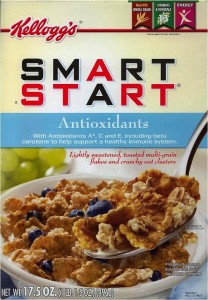Kellogg seeks weight-loss health claim for cereals
While we are on the subject of European decisions on health claims, Kellogg has just petitioned the European Food Safety Authority to be allowed to put claims for weight loss on its breakfast cereals: “Ready-to-eat breakfast cereal can help to reduce body weight, can help to reduce body fat, can help to reduce waist circumference.”
Do you think they mean Froot Loops?
Kellogg is always way ahead of the curve on health claims. What is especially creative about this one is that the company is filing the claim through “article 13.5,” which means that the “science still remains proprietary and does not require disclosure through this process. A Kellogg official explained:
As we understand article 13.5, five years after approval of the health claim, the wording can then can be used by other cereal manufacturers but our scientific data does not have to be made public.
EFSA, I hope, will turn this one down flat. I want to see the science before believing that breakfast cereals are diet products. Sure they are, if you eat just one serving for breakfast, use one more to substitute for a meal, and then eat a small meal. That would work. But so would chocolate bars.


